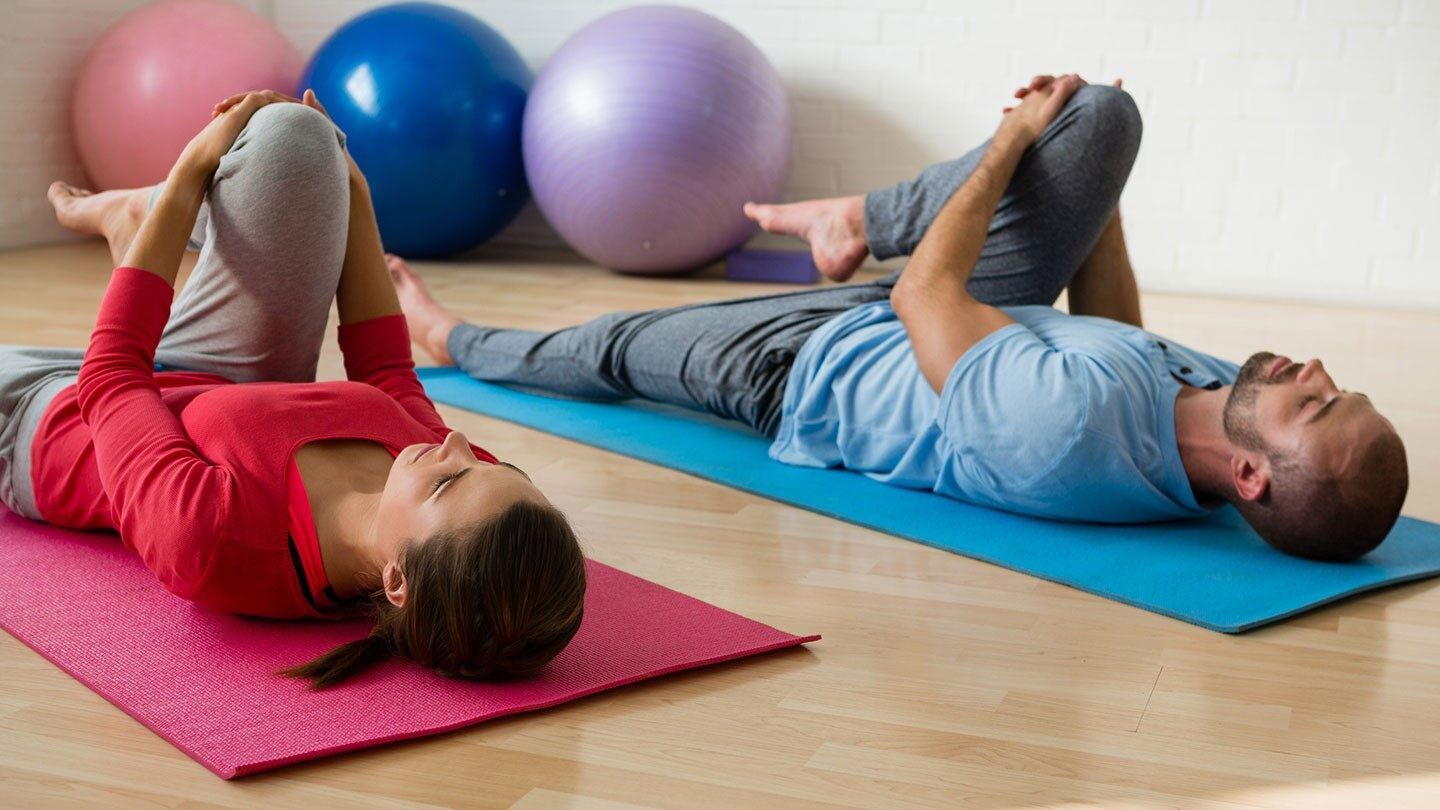Home>Misc>Featured>What Are The Categories Of Strengthening And Endurance Activities


Featured
What Are The Categories Of Strengthening And Endurance Activities
Modified: January 2, 2024
Discover the different categories of featured strengthening and endurance activities that can help you achieve your fitness goals and improve your overall health.
Introduction
Welcome to the world of fitness and physical activities! If you’re looking to improve your overall health and well-being, incorporating both strengthening and endurance activities into your routine is essential. These two categories of activities target different aspects of fitness, allowing you to build strength, increase muscle endurance, and enhance cardiovascular health.
Strengthening activities focus on building and toning your muscles, while endurance activities are aimed at improving your cardiovascular fitness and stamina. By understanding the benefits and differences between these categories, you can create a well-rounded fitness regimen that meets your specific goals.
The World Health Organization (WHO) recommends that adults engage in at least 150 minutes of moderate-intensity aerobic activity or 75 minutes of vigorous-intensity aerobic activity per week, along with muscle-strengthening activities at least two days a week. By incorporating both strengthening and endurance activities into your routine, you’ll not only meet these guidelines but also experience numerous other health benefits.
In this article, we will explore the categories of strengthening and endurance activities in more detail, providing you with a comprehensive understanding of each and their respective benefits. So let’s dive in!
Strengthening Activities
Strengthening activities, also known as resistance or weight-bearing exercises, focus on building and toning your muscles. These activities involve using resistance, such as weights, resistance bands, or your own body weight, to challenge and overload your muscles. By consistently engaging in strengthening activities, you can increase muscle mass, improve bone density, enhance overall strength, and boost your metabolism.
There are various forms of strengthening activities that target different muscle groups and areas of the body. Let’s explore some popular examples:
- Weightlifting: This includes exercises like squats, deadlifts, bench presses, and bicep curls, which involve lifting weights to challenge your muscles and promote muscle growth.
- Bodyweight exercises: These exercises, such as push-ups, pull-ups, lunges, and planks, use your own body weight as resistance to build strength and improve muscle tone.
- Resistance band exercises: Using elastic bands of varying resistance levels, you can perform exercises like bicep curls, lateral raises, and tricep extensions to target specific muscle groups.
- Pilates: This low-impact workout focuses on core strength, stability, and flexibility through controlled movements that engage and strengthen various muscles.
- Yoga: While primarily known for its flexibility benefits, yoga poses also require strength and muscle engagement to maintain proper form, making it a great option for overall strength development.
It’s important to gradually increase the intensity and resistance of your strengthening activities over time to continually challenge your muscles. This can be done by increasing the amount of weight lifted, adding additional repetitions or sets, or progressing to more challenging variations of exercises.
Engaging in regular strengthening activities offers numerous benefits beyond just building muscles. It can help improve posture, increase joint stability, enhance athletic performance, and reduce the risk of injury. Additionally, as you build muscle, your metabolism becomes more efficient, leading to increased calorie burning even at rest.
Remember to always warm up before engaging in any strengthening activities and cool down afterward to prevent injury and promote muscle recovery. It’s also important to listen to your body, allowing for rest and recovery days to avoid overtraining.
Now that you understand the importance of strengthening activities, let’s move on to exploring the category of endurance activities and how they can benefit your overall fitness and well-being.
Endurance Activities
Endurance activities, also known as aerobic or cardio exercises, are designed to improve your cardiovascular fitness and stamina. These activities elevate your heart rate and breathing, increasing the amount of oxygen delivered to your muscles. By regularly engaging in endurance activities, you can improve your lung capacity, boost your endurance levels, burn calories, and reduce the risk of chronic diseases.
There are various types of endurance activities that you can incorporate into your fitness routine. Let’s explore some popular examples:
- Running and Jogging: This classic form of exercise is an effective way to improve cardiovascular fitness. Whether you prefer outdoor running or treadmill workouts, jogging at a moderate to vigorous intensity can strengthen your heart and lungs.
- Cycling: Whether it’s indoor cycling on a stationary bike or hitting the roads on a traditional bike, cycling is a low-impact activity that builds endurance and strengthens your leg muscles.
- Swimming: A full-body workout that is easy on the joints, swimming engages multiple muscle groups while providing cardiovascular benefits. It’s a great option for individuals with joint pain or injuries.
- Brisk Walking: Walking at a faster pace can be a fantastic endurance activity. It’s accessible to people of all fitness levels and requires no special equipment, making it an excellent choice for beginners.
- Dancing: Whether it’s Zumba, aerobic dance classes, or simply dancing in your living room, moving to the beat can be a fun and effective way to boost your heart rate and improve endurance.
During endurance activities, it’s important to maintain a target heart rate within a certain range to maximize its benefits. The American Heart Association recommends aiming for a heart rate between 50-85% of your maximum heart rate during moderate-intensity endurance activities.
Regularly participating in endurance activities not only improves your cardiovascular health but also has positive effects on your mental well-being. Exercise releases endorphins, which are natural mood boosters, and can help reduce symptoms of anxiety and depression.
When incorporating endurance activities into your fitness routine, start gradually and increase the duration and intensity over time. Aim for a minimum of 150 minutes of moderate-intensity aerobic activity or 75 minutes of vigorous-intensity aerobic activity each week, spread out over several days.
Now that we’ve explored both strengthening and endurance activities, you have a better understanding of how they contribute to overall fitness and well-being. Combine these two categories to create a comprehensive and balanced fitness routine that meets your goals and keeps you motivated.
Conclusion
Incorporating both strengthening and endurance activities into your fitness routine is essential for achieving optimal health and wellness. Strengthening activities help build and tone muscles, improve bone density, and boost metabolism, while endurance activities enhance cardiovascular fitness, increase stamina, and burn calories.
By regularly engaging in strengthening activities such as weightlifting, bodyweight exercises, and resistance band workouts, you can develop muscle strength, improve posture, and reduce the risk of injury. These activities provide a solid foundation for overall physical fitness and functional movement.
Endurance activities, including running, cycling, swimming, brisk walking, and dancing, elevate heart rate and improve lung capacity. They contribute to improved cardiovascular health, increased endurance, and mood elevation. By incorporating these activities into your routine, you can supercharge your cardiovascular fitness and experience the mental and physical benefits that come with it.
Remember to customize your fitness routine to align with your goals, fitness level, and preferences. Gradually increase the intensity and duration of your workouts, listen to your body, and incorporate rest and recovery days to prevent overtraining and promote muscle growth and repair.
Whether you’re aiming to build strength, improve endurance, or simply maintain good overall health, finding a balance between strengthening and endurance activities is key. By combining these two categories, you will create a well-rounded fitness routine that challenges your body, stimulates your mind, and brings you closer to achieving your fitness goals.
So, lace-up your sneakers, grab your weights or resistance bands, and embark on a journey to a stronger, fitter, and healthier you!









